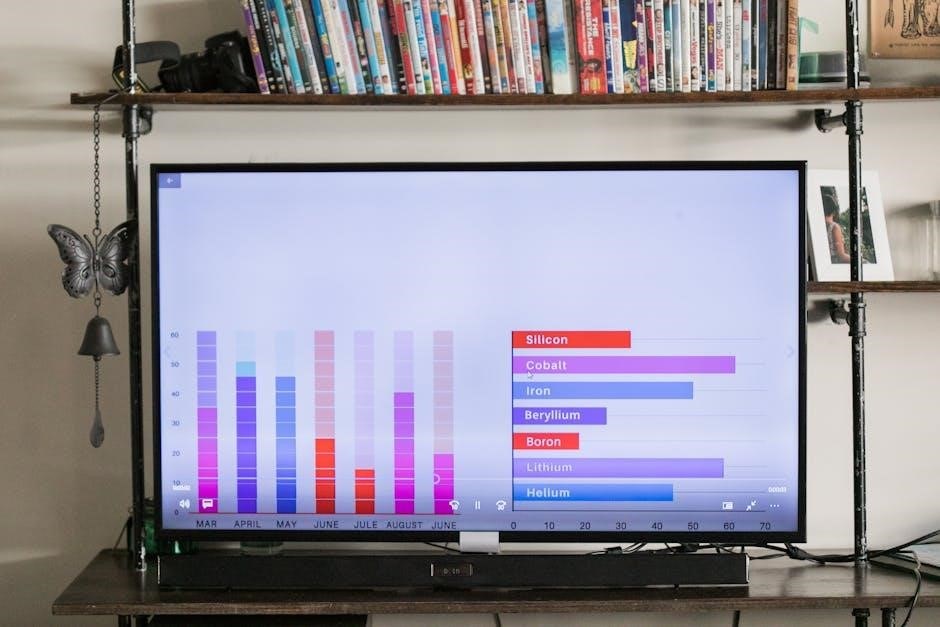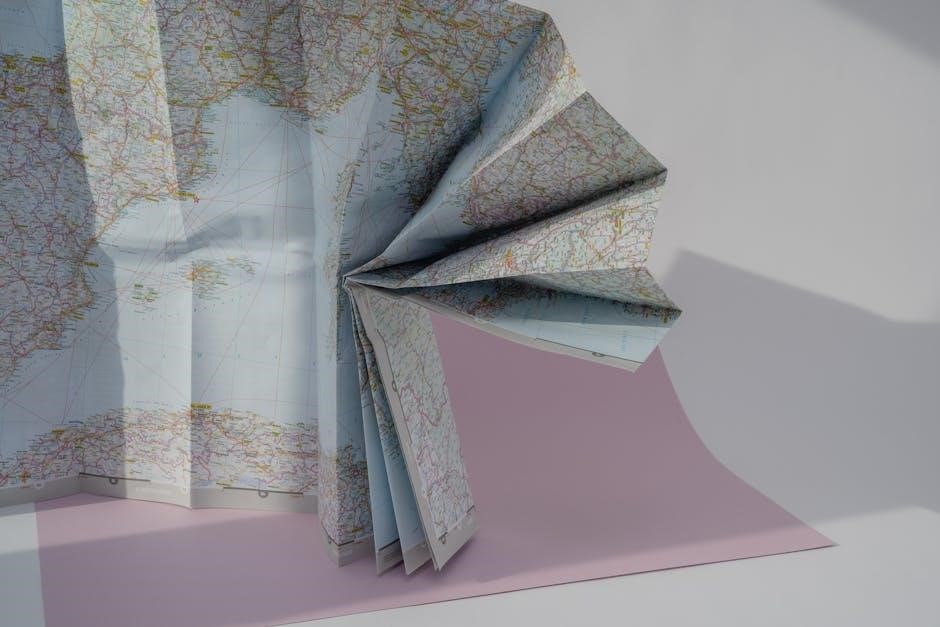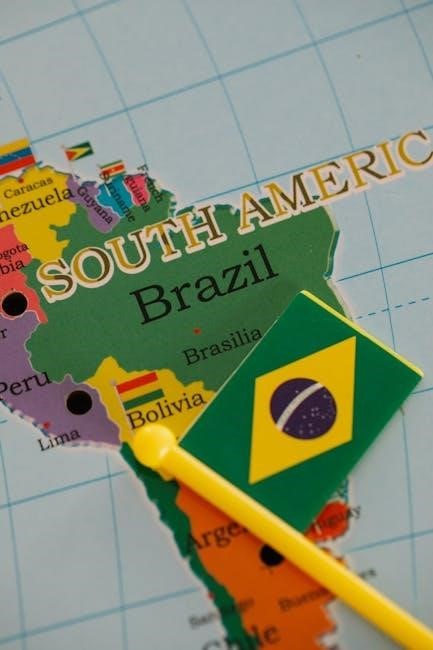DMC Color Chart PDF: A Comprehensive Guide
Embark on a colorful journey into the world of DMC floss with our comprehensive guide. This resource is dedicated to exploring the intricacies of the DMC color chart, offering insights, resources, and tips for crafters of all levels.
DMC floss, a staple in the crafting world, is renowned for its vibrant colors and consistent quality. This embroidery floss, made from 100% long staple cotton, is a favorite among cross-stitchers, embroiderers, and other fiber artists. At the heart of working with DMC floss lies the DMC color chart, a comprehensive visual guide showcasing the full spectrum of available colors. These charts are essential tools for selecting the perfect shades for your projects.

A DMC color chart provides a detailed overview of each color, often including its unique number and name. These charts are available in various formats, including physical cards and digital PDFs. The digital versions offer convenience and accessibility, allowing crafters to easily browse and compare colors on their computers or mobile devices. Free printable DMC color chart PDFs are especially popular, providing a cost-effective way to keep a handy reference guide in your craft space. Whether you’re a seasoned stitcher or a beginner, understanding and utilizing a DMC color chart is key to achieving stunning and accurate results in your creative endeavors.
Understanding the Importance of a DMC Color Chart
A DMC color chart is more than just a pretty picture; it’s an indispensable tool for anyone working with DMC embroidery floss. Its importance stems from several key factors. Firstly, it provides visual accuracy. While online images can vary due to screen calibration and lighting, a well-printed or physical DMC color chart offers a more reliable representation of the true floss colors. This is crucial for ensuring that your color choices accurately reflect your creative vision.
Secondly, a DMC color chart facilitates color matching and conversion. Whether you’re substituting colors in a pattern or converting between different floss brands, the color chart helps you find the closest possible matches. This is particularly useful when working with older patterns or when specific colors are unavailable. Furthermore, a color chart aids in organizing your floss stash, enabling you to easily locate and manage your collection. Ultimately, the DMC color chart empowers crafters to make informed color decisions, enhancing the overall quality and aesthetic appeal of their projects. It’s a fundamental resource that bridges the gap between imagination and reality in the world of needlework.
Accessing a DMC Color Chart PDF
Finding a DMC color chart PDF is generally a straightforward process, with numerous online resources offering downloadable versions. A simple web search for “DMC color chart PDF” will yield a plethora of results, including options from DMC’s official website, crafting blogs, and online retailers. However, it’s crucial to exercise caution and ensure that you’re downloading from a reputable source to avoid potential malware or inaccurate charts.
Many crafting websites and forums dedicated to cross-stitch and embroidery offer free DMC color chart PDFs. These charts are often created and shared by fellow enthusiasts, providing a valuable community resource. Before downloading, check the chart’s publication date to ensure it includes the latest DMC colors. Some sites may require registration or a newsletter subscription to access the PDF, while others offer direct downloads.
Once you’ve located a suitable PDF, download and save it to your computer or device for easy access. Consider printing the chart for convenient reference during your crafting projects, keeping in mind that screen calibration and printer settings can affect color accuracy.
Free Printable DMC Color Chart PDFs
The crafting community thrives on sharing, and free printable DMC color chart PDFs are a testament to this spirit. Numerous websites offer these charts as a complimentary resource for cross-stitchers, embroiderers, and other needlework enthusiasts. These free charts typically provide a comprehensive overview of the DMC color range, including color names, numbers, and visual swatches.
When searching for a free printable DMC color chart PDF, consider the chart’s layout and organization. Some charts arrange colors by family, while others follow numerical order. Choose the format that best suits your preferences and project needs. Additionally, pay attention to the chart’s resolution and print quality to ensure accurate color representation.
Many free printable DMC color chart PDFs are designed to be printed on standard A4 or letter-size paper. Before printing, double-check your printer settings to ensure the chart is scaled correctly and that colors are reproduced as accurately as possible. Remember that screen calibration and printer limitations can influence color perception, so it’s always a good idea to compare the printed chart with a physical DMC color card or a calibrated digital version for optimal accuracy.
DMC Color Chart Organization: Color Families vs. Numerical Order

DMC color charts are typically organized in two primary ways: by color families and by numerical order. Each method offers distinct advantages depending on the user’s needs and preferences. Understanding these organizational structures can significantly enhance your ability to navigate and utilize the chart effectively.
Color family organization groups similar hues and shades together, making it easy to find coordinating colors for your projects. This arrangement is particularly helpful when you have a general idea of the color you want but need to explore variations and complementary options. Within each color family, shades are typically arranged from lightest to darkest, providing a visual gradient for easy selection.
Numerical order, on the other hand, arranges the colors according to their assigned DMC color numbers. This method is ideal when you know the specific color number you’re looking for, such as when following a pattern or matching existing floss. Numerical charts often include color names or descriptions alongside the numbers, allowing for quick identification. Some charts may also include hexadecimal codes or Pantone numbers for precise color matching across different mediums. The choice between color family and numerical organization depends on your specific workflow and project requirements.
Decoding DMC Color Codes and Names
DMC color codes are numerical identifiers assigned to each unique shade of DMC embroidery floss. These codes serve as a universal language for crafters, ensuring accurate color matching across projects and patterns. Understanding how these codes are structured and what they represent is crucial for effective use of DMC floss.
Each DMC color code consists of a number, typically ranging from three to four digits. These numbers do not follow a specific pattern related to the color family but are simply sequential identifiers. For example, colors in the red family might have codes like 304, 321, and 347, without any numerical connection between their hues.
In addition to the numerical code, each DMC floss color also has a descriptive name. These names provide a general indication of the color, such as “Light Blue,” “Emerald Green,” or “Antique Mauve.” While the names are helpful, it’s essential to rely on the numerical code for precise matching, as color perception can vary. Some charts may include additional information, such as RGB values or hexadecimal codes, further aiding in accurate color representation. By understanding both the codes and names, crafters can confidently select the perfect shades for their projects.
Using a DMC Color Chart for Cross-Stitch and Embroidery
The DMC color chart is an indispensable tool for cross-stitch and embroidery enthusiasts, enabling accurate color selection and project planning. Whether you’re working from a pattern or creating your own design, the color chart ensures that you choose the perfect shades to bring your vision to life.
When using a pattern, the DMC color codes listed are your primary guide. Refer to your color chart to visually match the codes with the corresponding floss colors. This step is crucial for achieving the intended look of the design; For those creating their own patterns, the color chart offers a vast palette of options. Consider the overall aesthetic you desire and select colors that complement each other harmoniously.
Beyond color selection, the DMC color chart aids in organization and inventory management. As you build your floss collection, mark off the colors you own on the chart. This allows you to quickly identify which colors you need to purchase and prevents unnecessary duplicates. Furthermore, the chart can be used to track the amount of floss you have for each color, ensuring you don’t run out mid-project. With its versatility and practical applications, the DMC color chart is a must-have for any serious cross-stitcher or embroiderer.
DMC Color Chart for Diamond Painting
The DMC color chart plays a vital role in diamond painting, providing a standardized reference for matching drill colors to the corresponding symbols on the canvas. Diamond painting enthusiasts rely on the DMC color codes to ensure accuracy and consistency in their projects;
When starting a new diamond painting, the first step is to familiarize yourself with the DMC color chart. Each symbol on the canvas corresponds to a specific DMC color code, which indicates the shade of drill to be used in that area. By consulting the color chart, you can easily identify the correct drill color and attach it to the corresponding symbol on the canvas.
A comprehensive DMC color chart for diamond painting typically includes all 447 DMC colors, along with their corresponding codes and names. Some charts also provide additional information, such as hexadecimal codes and Pantone numbers, for even greater accuracy. Having a reliable DMC color chart ensures that you can accurately match the drills to the canvas, resulting in a visually stunning and professional-looking diamond painting. Furthermore, the chart helps in organizing and storing your diamond drills, making it easier to find the colors you need for your projects.
Converting Colors: DMC to Anchor and Other Brands
When working on cross-stitch or embroidery projects, you may encounter patterns that call for specific thread brands, such as DMC or Anchor. However, if you prefer to use a different brand or have limited access to certain colors, converting thread colors becomes necessary. Color conversion charts are valuable tools that help you find equivalent shades across different brands.
DMC is a widely recognized and popular brand of embroidery floss, but Anchor and Cosmo are other reputable brands with their own color ranges. A color conversion chart provides a side-by-side comparison of colors, allowing you to identify the closest match in a different brand. These charts typically list DMC colors alongside their corresponding Anchor or Cosmo equivalents.
When converting colors, it’s important to note that exact matches may not always be possible. Different brands use different dyeing processes, which can result in slight variations in color. However, color conversion charts aim to provide the closest possible match, ensuring that your finished project maintains the intended color scheme. Additionally, digital tools and online resources are available to assist with color conversions, offering suggestions for alternative thread colors based on your specific needs.

Accuracy Considerations: Screen Calibration and Printing
When utilizing a DMC color chart, either in digital or printed form, it’s crucial to acknowledge the potential for color inaccuracies. The way colors are displayed on a screen or rendered in print can deviate from the actual thread color due to several factors. Screen calibration plays a significant role in color accuracy. Computer monitors often have different color settings, which can skew the appearance of colors.
To ensure the most accurate representation, it’s recommended to calibrate your monitor using specialized software or hardware. This process adjusts the monitor’s color output to match a known standard, resulting in more consistent color display. Similarly, printing a DMC color chart can introduce inaccuracies; Printers use different ink sets and printing technologies, which can affect color reproduction.
The type of paper used can also influence the final printed colors. To mitigate these issues, it’s advisable to use a high-quality printer and select a paper type that is known for accurate color reproduction. Additionally, consider printing a test page and comparing it to a physical DMC thread card to assess the color accuracy of your printer. Remember that thread colors may look slightly different on a computer screen!
DMC Color Chart Updates and New Colors
The world of crafting is ever-evolving, and DMC, as a leading provider of embroidery floss, periodically introduces new colors to its extensive palette. These additions expand the creative possibilities for cross-stitch, embroidery, and other needlework projects. Therefore, it’s essential to stay informed about DMC color chart updates to ensure that your reference materials are current and comprehensive.
New colors are typically released to reflect emerging trends in design and fashion, providing crafters with the tools to create contemporary and visually appealing pieces. These updates may include subtle variations of existing shades or entirely new hues that broaden the spectrum of available colors. Keeping track of these additions can be achieved through various channels.
DMC’s official website is the primary source for information regarding new color releases. You can also find updates on crafting blogs, forums, and social media groups dedicated to embroidery and cross-stitch. Many online retailers that sell DMC floss also announce new colors and provide updated color charts for download. By staying vigilant and utilizing these resources, you can ensure that your DMC color chart remains a reliable and up-to-date tool for your creative endeavors.
Where to Find Physical DMC Color Cards
While digital DMC color charts offer convenience, a physical DMC color card provides the most accurate representation of thread colors. The tactile experience of seeing and feeling the actual floss against the card is invaluable for color selection. Fortunately, physical DMC color cards are readily available through various channels.
Local craft stores and needlework shops are primary sources for purchasing DMC color cards. These stores often carry the most up-to-date versions, allowing you to examine the floss swatches in person. Major retailers with craft sections, such as large chain stores, may also stock DMC color cards. Checking their online inventory or visiting the store directly can confirm availability.

Online retailers specializing in embroidery and cross-stitch supplies offer another convenient way to acquire physical DMC color cards. These retailers typically provide detailed product descriptions and images, but keep in mind that screen variations can affect color perception. Additionally, keep an eye out for special offers or promotions that may include a free DMC color card with a qualifying purchase. Consider exploring online marketplaces like Etsy, where independent sellers and small businesses often offer DMC color cards.
Digital DMC Color Charts and Tools
In today’s digital age, crafters have access to a wealth of online resources, including digital DMC color charts and tools designed to enhance their cross-stitch and embroidery projects. These digital tools offer convenience, portability, and a range of features that can simplify color selection and project planning.
Several websites and mobile applications provide interactive DMC color charts. These charts typically display the full range of DMC floss colors, allowing users to browse by color family, number, or name. Some digital charts also include features such as color palettes, conversion tools, and project planning tools.
Furthermore, online tools can assist with color matching and substitution. These tools allow users to select a DMC color and find the nearest alternative from other brands or within the DMC range. This is particularly useful when a specific color is unavailable or when experimenting with different color combinations. Many cross-stitch pattern design software programs incorporate digital DMC color charts, enabling crafters to visualize their projects with accurate thread colors. Additionally, some websites offer DMC thread inventory spreadsheets that can be downloaded to keep track of your floss collection.

No Responses